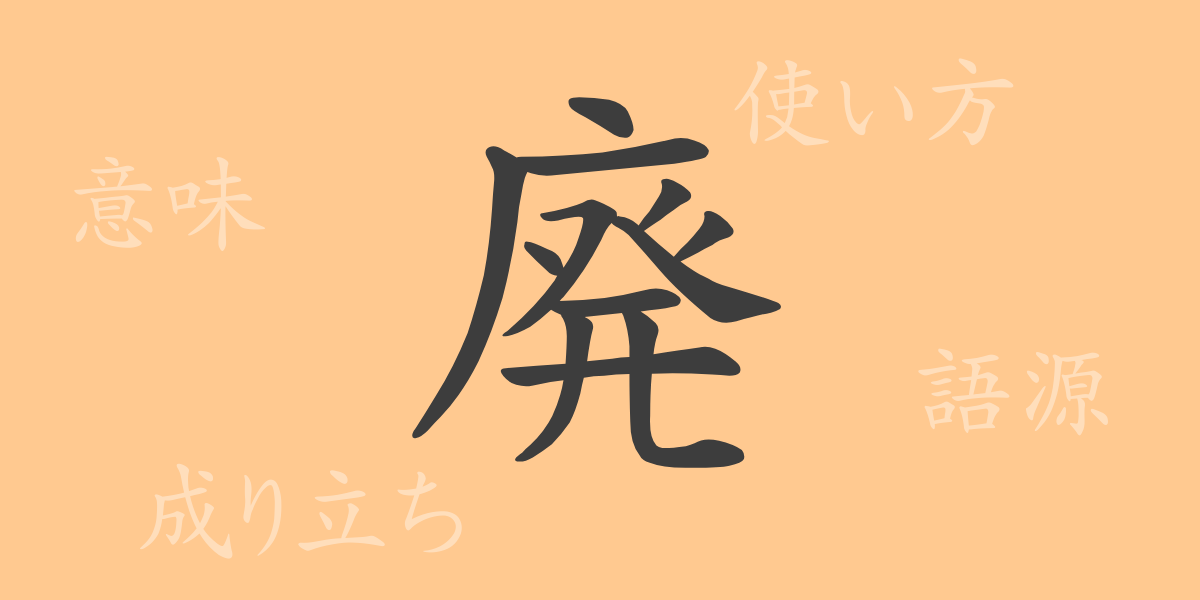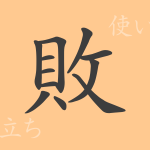Japanese culture and language are deeply embedded with rich history and meanings, and among them, the Kanji “廃” (はい) plays an integral role. This character not only appears in numerous idioms and proverbs but is deeply rooted in our daily lives. In this article, we delve into the Kanji “廃”, exploring its origins, meanings, and contemporary usages. Join us on a journey to rediscover the beauty of the Japanese language through the history and philosophy embedded in a single character.
Origins of 廃 (はい)
The Kanji “廃” originated from ancient China and was developed from pictographs. Initially representing a broken city wall, it came to mean ruins or abolishment. Over time, it has been used to depict the state of things becoming obsolete or declining, reflecting the cessation or decay of objects, cultures, systems, or technologies.
Meaning and Usage of 廃
“廃” primarily describes the state of decline or disuse. It is used in words like “廃れる” (to become obsolete), “廃止” (abolition), and “廃絶” (extinction), depicting how cultures, systems, or technologies become outdated and disappear from everyday life. It also appears in contexts like “廃校” (abandoned school) or “廃線” (disused railway line), indicating the end of an institution or service.
Readings, Stroke Count, and Radical of 廃
“廃” is used in various readings within Japanese:
- Readings: On-reading is “ハイ”, Kun-readings are “すた.れる” and “すた.る”
- Stroke Count: “廃” consists of 12 strokes.
- Radical: The radical of “廃” is “广” (まだれ), which is related to buildings or shelters.
Idioms, Proverbs, and Phrases Using 廃
“廃” appears in numerous idioms and proverbs, enriching the Japanese language:
- 廃墟 (はいきょ): Refers to abandoned, dilapidated buildings or facilities.
- 廃止 (はいし): Officially ending something, like a system or law.
- 廃業 (はいぎょう): Ending a business due to economic reasons or lack of succession.
- 廃人 (はいじん): Someone who cannot participate in social life due to illness or addiction.
- 風前の灯 (ふうぜんのともしび): A proverb not directly using “廃” but depicting a very precarious situation or unstable future, often symbolizing something on the verge of extinction.
Conclusion on 廃
The Kanji “廃” has evolved over time but continues to express the cessation or decay of objects or practices. When encountering “廃” in Japanese, recalling its historical and cultural significance can deepen our understanding. This article hopefully serves as a catalyst to appreciate the infinite possibilities a single Kanji holds and the importance of communication through words.

























